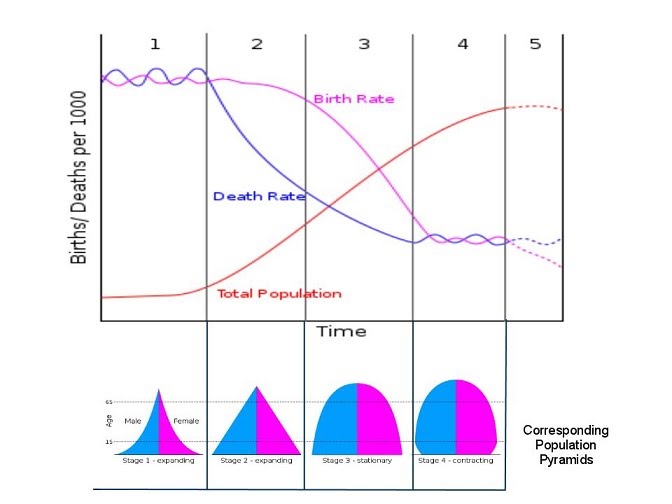Birth rate, death rate and population increase
Human populations grow and shrink due the balance between births and deaths. The number of births per 1000 people is called the birth rate, and the number of deaths per 1000 people is the death rate.
The Population Growth Rate
Population growth rate = birth rate – death rate
It’s really not a complicated equation, you must admit. Say the birth rate of Switzerland was 23/1000 and the death rate 28/1000. The population growth rate works out as -5/1000 (23/1000 – 28/1000). As a percentage, this is -0.5% growth. This means that there is a net decrease of 5 people per thousand.
The Demographic Transition Model
This is a model used to classify different populations depending on their birth rate, death rate, overall population size, and the factors behind these numbers. There are 5 different stages:
Stage 1
- Birth rate is high due to lack of contraception and low education.
- Death rate is also high due to poor sanitation, high infant mortality and starvation.
- Therefore, overall population size remains low.

